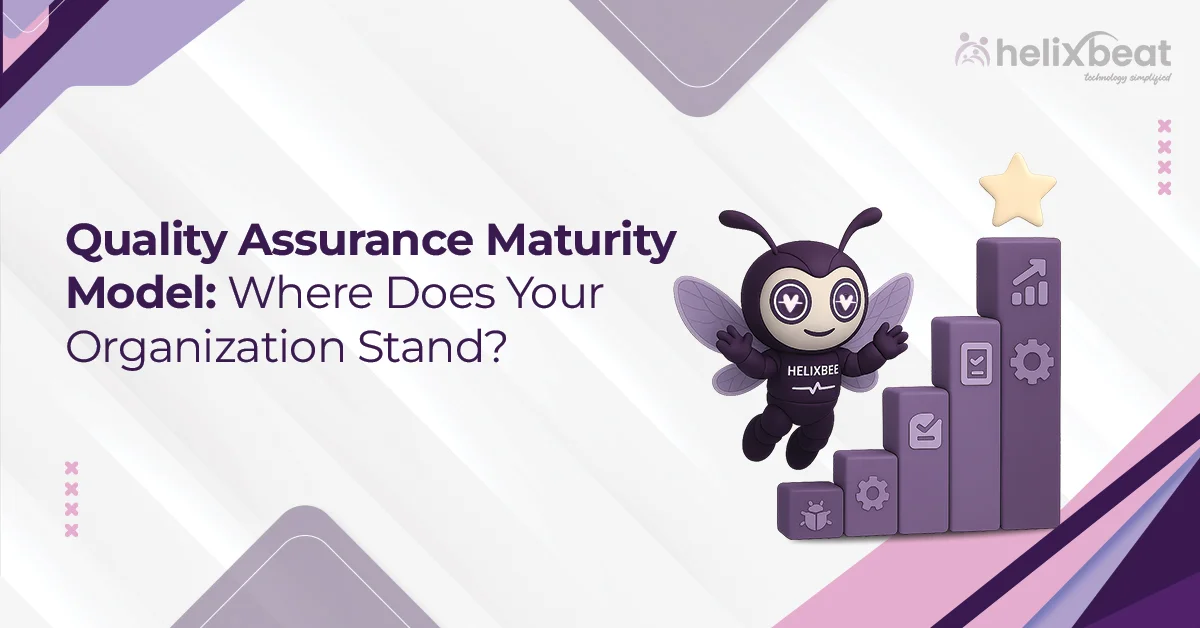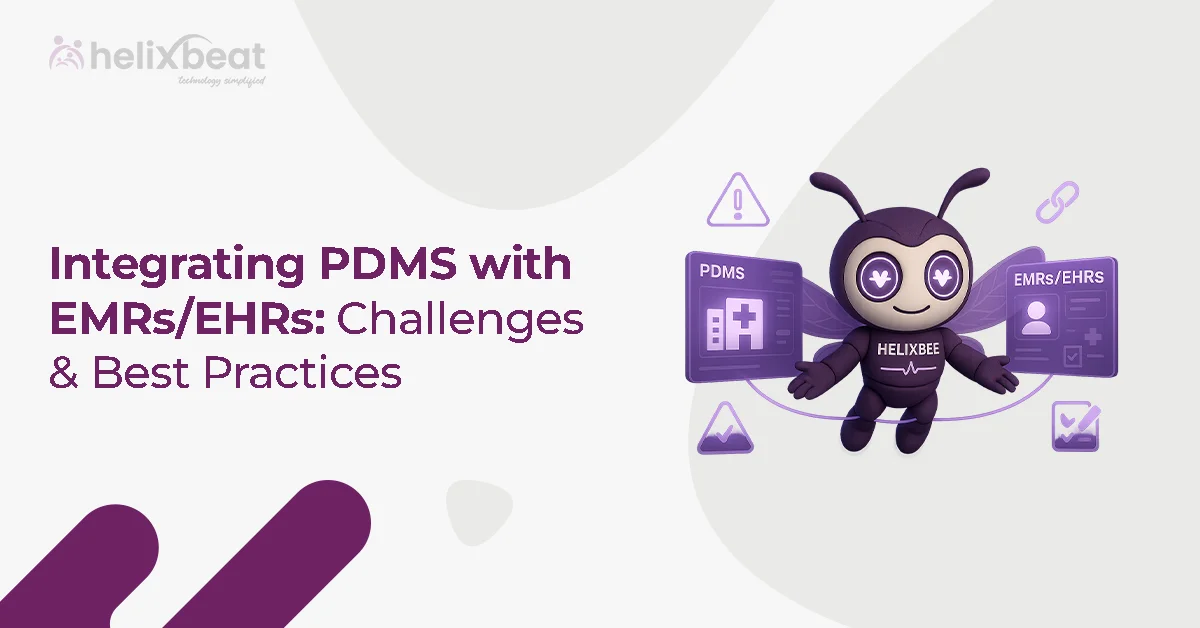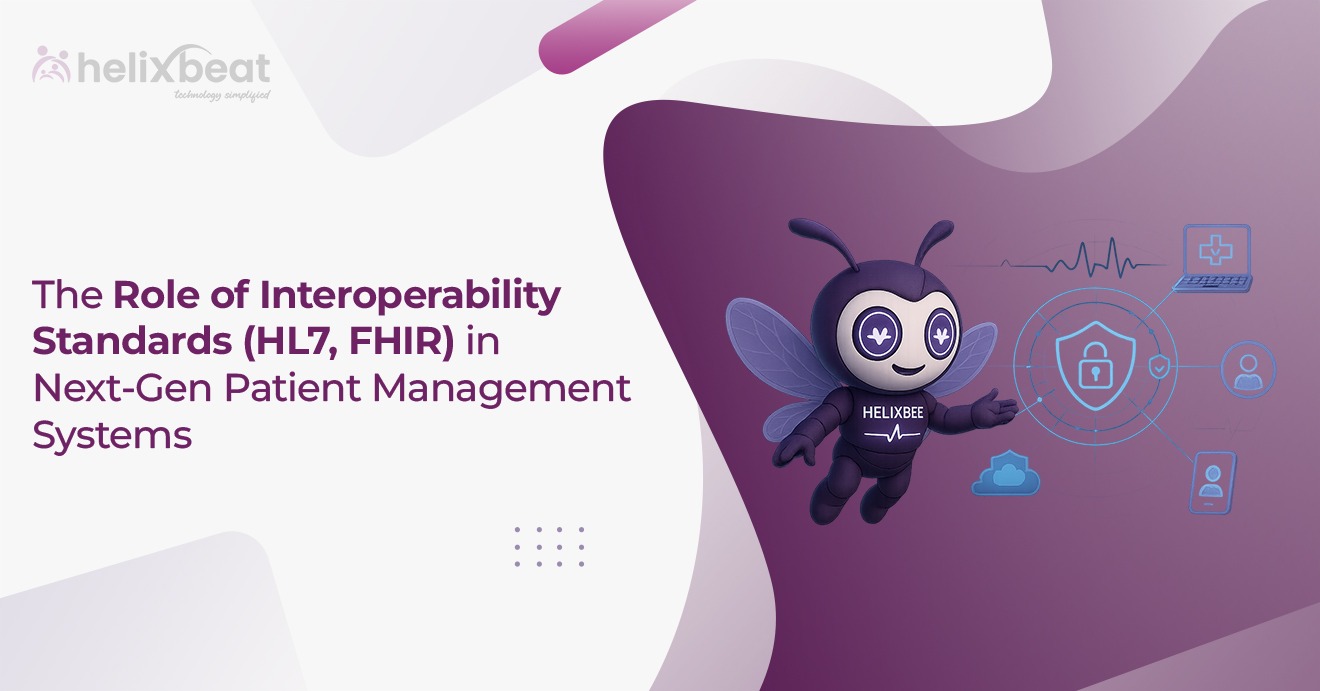Poor quality management is a major issue in software development. According to the Standish Group, 49% of software projects fail because of bad quality assurance, leading to delays and cost overruns. For example, a popular e-commerce site faced massive downtime during a product launch due to untested bugs. This hurt their brand reputation and customer trust.
The solution to such challenges lies in adopting a Quality Assurance Maturity Model. This model helps businesses assess and improve their testing processes. By evaluating QA maturity, companies can increase their software quality, speed up releases, and reduce defects, ultimately delivering better products and improving customer satisfaction.
QA testing services are key to achieving this maturity by providing the expertise and tools needed to enhance testing processes at every stage. Let’s see quality assurance maturity model in detail.

Table of Contents
What is QA Maturity Model?
The QA Maturity Model is a structured framework that helps organizations assess and improve their quality assurance processes. It provides a clear path for developing and refining testing practices, ensuring that quality is built into every phase of the software development lifecycle.
By evaluating the current state of QA within a company, the model highlights areas for improvement and guides teams through a series of stages, from ad hoc testing to fully automated and integrated testing systems. The goal of the QA Maturity Model is to optimize testing efficiency, reduce defects, and deliver high-quality software consistently.
5 Different Stages of QA Maturity
The QA Maturity Model consists of five stages, each reflecting a different level of QA process sophistication:
1. Initial/Ad Hoc
At this stage, QA processes are unstructured, reactive, and mostly manual. Testing is done on an as-needed basis without clear guidelines or integration with the development cycle, leading to missed defects and slower release cycles.
2. Managed
Testing processes become more organized with basic documentation and repeatable procedures. While still largely manual, there is a focus on standardizing test cases and improving consistency. However, collaboration between teams is limited, and testing coverage remains incomplete.
3. Defined
QA processes are standardized and integrated into the software development lifecycle (SDLC). Test strategies are formalized, and automation is introduced for regression testing. Communication between development and QA improves, but automation may still be limited to certain areas.
4. Quantitatively Managed
Data and metrics are used to manage QA efforts. Test coverage and defect tracking become data-driven, and automation tools are extensively used within continuous integration (CI) pipelines. Testing becomes more reliable and scalable, supported by performance indicators.
5. Optimized
At this stage, testing is fully automated and integrated into the development pipeline. Advanced techniques like AI and predictive analytics are applied to optimize tests and improve defect detection. Continuous improvement ensures faster, more reliable software releases with minimal defects.
Each stage marks a progression from ad hoc testing to a fully optimized, data-driven QA process, improving software quality and release efficiency. QA testing services play a crucial role in this journey, ensuring that each stage is executed with precision and aligned with industry best practices.
Why QA Maturity Evaluation is Important
A QA maturity evaluation is crucial for organizations to assess their testing processes and identify areas for improvement. Here’s why:
- Identifies Process Gaps: The evaluation uncovers weaknesses in the testing process. For example, a company that discovers gaps in their manual testing coverage might introduce automated testing for repetitive tasks, improving efficiency.
- Enhances Test Efficiency: By streamlining processes, companies can reduce testing time and errors. For instance, a software development team using a QA maturity evaluation might identify that automating regression tests allows them to run tests more quickly and with fewer bugs, speeding up the release cycle.
- Improves Product Quality: Evaluating maturity ensures better testing practices, which results in fewer defects. A tech firm that adopts best practices after a maturity assessment may notice fewer post-release bugs, improving customer satisfaction and reducing costly patches.
- Supports Scalability: As businesses expand, their testing needs evolve. For example, a growing e-commerce company may use insights from a QA maturity evaluation to scale their testing process, ensuring that additional features and traffic can be managed without compromising quality.
Incorporating a QA testing service that aligns with your maturity level can drive continuous improvement and optimal software performance.
How Automated QA Supports Quality Maturity
Automated QA plays a crucial role in advancing QA maturity by enhancing testing efficiency, consistency, and scalability. As organizations progress through the stages of QA maturity, automation helps reduce manual effort, enabling faster execution of repetitive tests and allowing for more comprehensive test coverage. By integrating automated testing into the development pipeline, teams can continuously test new builds and detect defects early, preventing costly delays and improving product quality.
Automation also supports data-driven decision-making by providing reliable test metrics, which can be used to optimize the testing process. As a result, automated QA accelerates the transition from manual, ad-hoc testing to a more mature, automated, and scalable QA process, enabling teams to release high-quality software faster.
Role of QA Maturity in AI Software Development Company
In an AI software development company, QA maturity is critical to ensuring that complex algorithms and machine learning models are thoroughly tested for accuracy, reliability, and performance. As AI systems become increasingly sophisticated, the need for structured, well-defined QA processes becomes even more important.
A mature QA process ensures that AI models are tested not only for functionality but also for edge cases, data integrity, and scalability. Through the stages of QA maturity, AI companies can progressively automate testing, implement continuous integration pipelines, and leverage data-driven insights to improve model accuracy. This leads to faster iterations, better product quality, and more reliable AI-driven applications.
The Impact of QA Testing Services on Software Quality
QA testing services play a crucial role in ensuring software meets quality standards and functions as intended. Here’s how they impact software quality:
1. Set Clear, Achievable Goals
Conduct a thorough QA maturity evaluation to assess current capabilities. This helps leadership make informed decisions on resource allocation, tools, and training priorities.
2. Standardize Processes and Implement Tools
Document existing QA processes and identify gaps. Focus on tools that enhance automation, traceability, and integration with the development pipeline to improve consistency.
3. Gradually Introduce Automation
Set realistic goals for automation. Start by integrating automated frameworks incrementally, allowing the team to build confidence while improving speed and coverage.
4. Monitor Key Metrics
Track metrics like test coverage and defect density. Data-driven insights help identify underperforming areas, enabling teams to adjust and improve their QA processes effectively.
5. Invest in Continuous Skill Development
Invest in regular training and certifications to keep the team up-to-date with best practices and emerging technologies, such as AI-specific testing for AI-driven projects.
By incorporating QA testing services, organizations can significantly increase the quality, performance, and security of their software, leading to better business outcomes.
Final Thoughts
Achieving QA maturity is a journey that significantly increases software quality, speed, and reliability. By setting clear goals, standardizing processes, and gradually introducing automation, organizations can improve their testing efforts step by step. Monitoring key metrics and investing in continuous skill development ensures ongoing progress.
For businesses looking to optimize their QA processes, Helixbeat’s QA testing services provide the expertise and tools needed to accelerate your journey to QA maturity. With Helixbeat, you can ensure efficient, high-quality software releases tailored to your unique needs.
FAQ:
1. What are the different testing maturity levels?
The five testing maturity levels are:
- Initial/Ad Hoc: Testing is unstructured and reactive, with minimal documentation.
- Managed: Testing processes are defined, but manual and not fully integrated.
- Defined: Testing is standardized, with documented procedures and some automation.
- Quantitatively Managed: Data-driven testing with metrics, tracking performance, and increased automation.
- Optimized: Fully automated testing with continuous improvement and advanced techniques like AI.
2. What is a QA maturity assessment, and why is it important for improving testing processes?
A QA maturity assessment evaluates the effectiveness of your current testing processes, identifying gaps and areas for improvement. It helps prioritize actions for enhancing testing practices, optimizing resources, and ensuring better alignment with business goals.
3. How does a quality improvement roadmap guide better software testing?
A quality improvement roadmap provides a structured plan to enhance testing capabilities, setting clear goals, identifying necessary tools, and creating a timeline for implementation, ensuring continuous improvements in testing processes.
4. What is a QA benchmark and how can it be used to measure testing effectiveness?
A QA benchmark is a standard for evaluating the performance of testing efforts. By comparing current practices to these benchmarks, organizations can assess effectiveness, identify gaps, and set measurable goals for improvement.
5. Why is testing evaluation important?
Testing evaluation helps organizations assess the quality of their testing processes, identify inefficiencies, and ensure alignment with project goals, ultimately leading to more reliable and higher-quality software.














